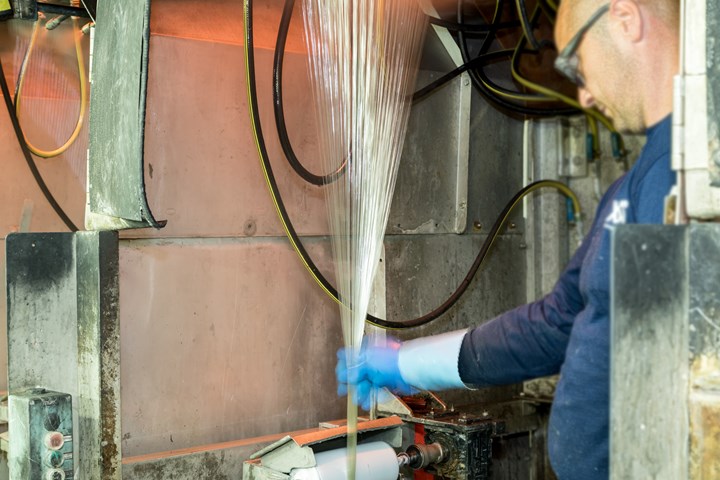Lanxess introduces new water-based dispersions for glass fiber sizing
Expansion of Lanxess’ Trixene Aqua BI product family offers excellent crosslink and adhesion promoters for aqueous coating systems, improves sizing formulation chemical and mechanical resistance.
Share

Photo Credit: Lanxess AG
Specialty chemicals company Lanxess (Cologne, Germany) has expanded its Trixene Aqua range of water-based blocked isocyanate dispersions. The product family now includes new grades, specifically designed to expand application areas and meet more demanding customer needs.
The product lineup includes Trixene Aqua BI 120, an adhesion promoter, and Trixene Aqua BI 522, a coating. However, the product most applicable to composites manufacturing is Trixene Aqua BI 202 sizing technology developed to improve chopped glass fiber strand strength and impact resistance, and impart higher mechanical and flexural properties. Trixene Aqua BI 202 is applicable in combination with Witcobond polyurethane (PU) dispersions.
Generally, Lanxess says its Trixene Aqua products are excellent crosslink and adhesion promoters for aqueous coatings systems. They reportedly boost the chemical and mechanical resistance of coatings and sizing formulations to enable improved performance and durability in the final application. As blocked isocyanates, the dispersions are said to be more stable than their respective free counterparts and can easily be formulated in one-component and two-component systems, together with a variety of complementary aqueous resins, such as hydroxy-functional acrylics, polyesters and urethanes.
Lanxess says its recent studies disclose formulation principles, preliminary selection of appropriate building blocks, ratio and curing conditions. The selection criteria are based upon a preliminary evaluation of the coatings properties, and help the formulator to commence work with Trixene Aqua BI crosslinkers.
Related Content
-
Sulapac introduces Sulapac Flow 1.7 to replace PLA, ABS and PP in FDM, FGF
Available as filament and granules for extrusion, new wood composite matches properties yet is compostable, eliminates microplastics and reduces carbon footprint.
-
Plant tour: Joby Aviation, Marina, Calif., U.S.
As the advanced air mobility market begins to take shape, market leader Joby Aviation works to industrialize composites manufacturing for its first-generation, composites-intensive, all-electric air taxi.
-
Manufacturing the MFFD thermoplastic composite fuselage
Demonstrator’s upper, lower shells and assembly prove materials and new processes for lighter, cheaper and more sustainable high-rate future aircraft.













